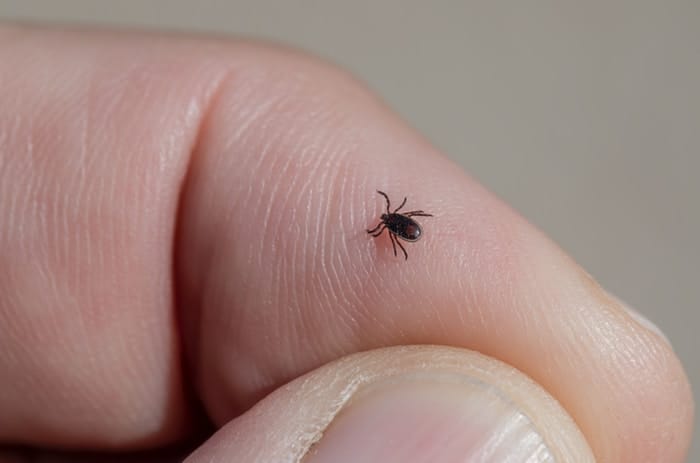Hiking is a great way to get outside and enjoy nature, but it can also be a risky activity if you’re not prepared. One of the biggest dangers when hiking with your dog is ticks. These tiny parasites can attach themselves to your pet and spread diseases like Lyme disease.

Fortunately, there are several things you can do to keep ticks off dogs while hiking. Here are four tips:
Check Your Dog for Ticks Regularly While Hiking
The best way to avoid ticks on dogs is to check them regularly for ticks while hiking. By checking your dog for ticks, you can remove any that are already attached and reduce the risk of your dog becoming infected with a tick-borne illness. Ticks can be difficult to spot, so it’s important to look carefully all over your dog’s body, including in the ears, between the toes, and around the neck.
Use Tick Repellent on Your Dog
Ticks are a common problem for both dogs and their owners. While there are many ways to prevent ticks, using tick repellent on your dog is one of the easiest and most effective ways to keep ticks off dogs. Tick repellent not only repels ticks, but it can also kill ticks that come in contact with it.
Use a Tick Collar
Tick collars are an effective way to prevent ticks from attaching to your dog. Tick collars work by releasing a chemical that repels ticks. In addition, tick collars kill ticks that come in contact with them.
Fun Outdoor Quiz

Keep Your Dog’s Coat Short
One of the best ways to keep ticks off dogs is by keeping their coats short. Ticks are more likely to attach themselves to dogs with long coats, so keeping your dog’s coat short will make it difficult for ticks to latch on. Additionally, ticks can be easily spotted from short-coated dogs, which means there is a lower risk of your dog contracting a tick-borne illness.
Inspect Your Dog’s Fur After Hikes
If you take your dog for a hike in the woods, it’s important to inspect its fur for ticks when you get home. Ticks can carry Lyme disease, which can be harmful to both dogs and humans. By checking your dog’s fur for ticks after hikes, you can prevent them from attaching and spreading Lyme disease.
Remove Any Ticks You Find Promptly
Ticks can be difficult to remove if they are not detected early. By removing ticks as soon as they are found, you can help protect your dog from harm and reduce the chances of a tick-borne illness.
Have Your Veterinarian Check Your Dog for Ticks After Hikes
It is important to have your veterinarian check your dog for ticks after hikes. The veterinarian will look for ticks and remove them if necessary. They may also recommend tick prevention products.

Where to Look for Ticks on Dogs?
Ticks are parasites that can transmit diseases to both pets and people. They can be found in many different places, including in your backyard. Here is a list of where to look for ticks on dogs so you can remove them before they cause any health problems.
- Between the Toes
- Ears
- Neck
- Belly
- Tail
- Groin
Is Vinegar a Good Tick Repellent?
There are many natural tick repellents on the market, but does vinegar work as one of them? Vinegar has been shown to be an effective tick repellent in some studies, while other studies have shown that it is not very effective. The reason why vinegar may work as a tick repellent is because ticks do not like the smell or taste of vinegar.
Does Apple Cider Vinegar Stop Ticks?
There is a lot of anecdotal evidence that apple cider vinegar stops ticks, but does it have any scientific backing? Vinegar does not kill ticks but will help remove the ticks. There are a few ways to use vinegar to help remove ticks. One way is to put vinegar in a spray bottle and spray the tick directly. Another way is to soak a cotton ball in vinegar and place it on the tick. The tick will detach from the skin within a few minutes.
Conclusion
In conclusion, there are several ways to keep ticks off dogs while hiking. Following these tips will help to keep both the dog and the hiker safe from the dangers of ticks.









